Summary of the Day:
Russian forces have unveiled new mechanized assault tactics west of Donetsk City, achieving minor territorial gains near Kupyansk, Chasiv Yar, Toretsk, and Pokrovsk. These advances, however, come at a cost as their armored vehicles remain susceptible to precise Ukrainian strikes, highlighting the ongoing vulnerability of Russian armor in the conflict.
On the diplomatic front, a prisoner exchange between the warring nations offers a rare moment of cooperation amidst the ongoing hostilities. This development provides a glimmer of humanitarian progress, even as the broader conflict continues unabated.
As the war grinds on, Russia is actively strengthening its military alliances, forging closer ties with China, North Korea, and Iran. These deepening relationships appear aimed at bolstering Moscow’s ability to sustain its prolonged campaign in Ukraine, raising questions about the conflict’s wider geopolitical implications.
What Can I Do To Help Ukraine? This is a question I receive all the time. We at Transform Ukraine are building longer-term housing for internally displaced Ukrainians. Visit Rebuild Ukraine for how you can assist in housing a Ukrainian family displaced by the war.
Picture of the Day:
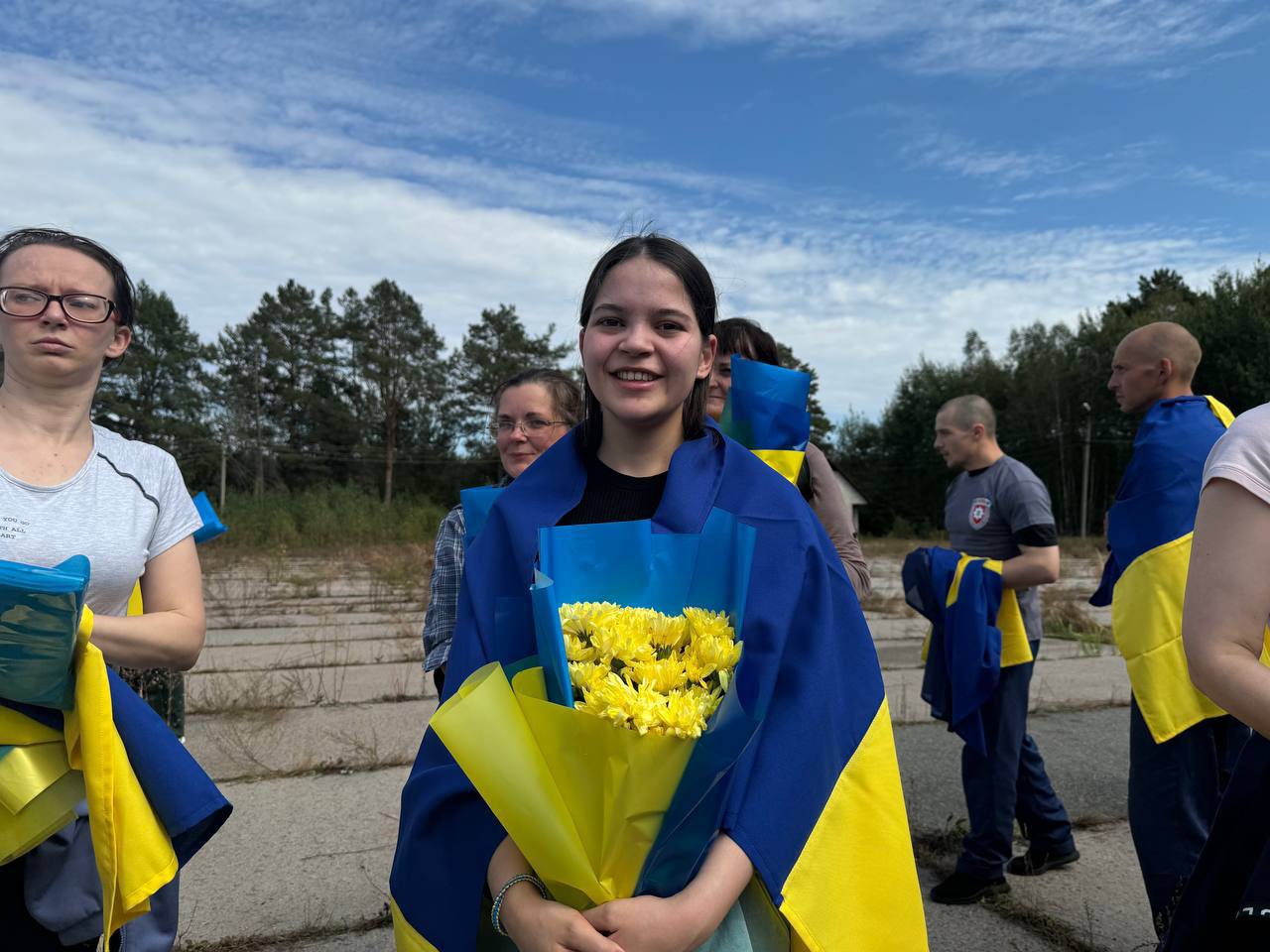 Crimean Tatar Leniye Umerova was brought back from Russian captivity during the 56th prisoner exchange (Volodymyr Zelensky)
Crimean Tatar Leniye Umerova was brought back from Russian captivity during the 56th prisoner exchange (Volodymyr Zelensky)
Beyond Ukraine – The March Towards World War
In a concerning escalation of military posturing, Russia continued its “Okean-2024” international naval exercises on September 13, drawing global attention to its expanding military reach. These exercises, which involve ships from Russia’s Northern, Baltic, and Pacific fleets, alongside Tu-22M3 bombers, showcase Moscow’s growing military capabilities and its willingness to project power across multiple theaters.
Further complicating the geopolitical landscape, Belarus, a close Russian ally, is strengthening its ties with Iran. Belarusian President Alexander Lukashenko met with Iranian official Ali Akbar Ahmadian on September 13, highlighting increased trade between the two nations and emphasizing the need for cooperation amid regional tensions. This meeting underscores the formation of a potentially destabilizing alliance among nations often at odds with Western powers.
Lukashenko’s vocal support for a multipolar world order and his emphasis on the growing importance of organizations like BRICS and the Shanghai Cooperation Organization signal a clear challenge to the current global power structure. These moves, coupled with Russia’s military exercises, paint a picture of a world increasingly divided into competing blocs, reminiscent of Cold War era tensions.
As Russia continues to flex its military muscle and forge alliances with nations like Belarus and Iran, the risk of a broader conflict looms larger. The international community watches with growing concern as these developments push the world perilously closer to the brink of a potential global confrontation.
The Path to Peace
China’s attempt to broker peace in Ukraine has met with skepticism and criticism, highlighting the complex dynamics of the ongoing conflict. The six-point peace plan, proposed jointly by China and Brazil in May, has been labeled “destructive” by Ukrainian President Volodymyr Zelensky.
The Chinese-Brazilian initiative calls for non-escalation, an international peace conference, humanitarian aid, and nuclear safety measures. However, it noticeably lacks mention of Ukraine’s territorial integrity or the withdrawal of Russian troops, key issues for the Ukrainian government.
President Zelensky has instead advocated for his own 10-point peace formula, which crucially includes the complete withdrawal of Russian forces from Ukrainian territory. This stark difference in approaches underscores the challenges in finding a universally acceptable resolution to the conflict.
Despite claims from Beijing of growing international support for its plan, Ukraine remains unconvinced. Kyiv views the Chinese proposal as potentially compromising its sovereignty, a concession it is unwilling to make in pursuit of peace.
China’s Defense Minister Dong Jun recently called for negotiations to end Russia’s war against Ukraine at a forum in Beijing, further emphasizing China’s desire to be seen as a peacemaker. However, China’s actions have raised questions about its true stance in the conflict.
While claiming neutrality, China has significantly strengthened its economic ties with Russia and has been supplying dual-use goods that could bolster Russia’s defense industry. This apparent contradiction between China’s words and actions has not gone unnoticed by international observers.
Despite these concerns, Ukraine’s former Foreign Minister has stated that China remains committed to Ukrainian sovereignty. President Zelensky himself has acknowledged China’s refusal to provide weapons to Russia, even as he criticizes their peace initiative.
The situation remains fluid, with China’s role in the peace process continuing to evolve. As the conflict persists, the international community watches closely to see how China’s diplomatic efforts will impact the search for a resolution in Ukraine.
Situation On The Land, Sea, and Air in Ukraine
As the conflict in Ukraine continues to evolve, Western nations are weighing the possibility of allowing Ukraine to use long-range weapons against targets inside Russian territory. This development comes amid warnings from Russian President Vladimir Putin and recent Ukrainian military actions in Russia’s Kursk region.
U.S. President Joe Biden and British Prime Minister Keir Starmer are scheduled to meet on Friday to discuss potentially lifting restrictions on long-range missile use by Ukraine. This consideration comes as Ukraine faces ongoing challenges on the battlefield and requests expanded military support. Russian President Putin has warned that such a move would mean NATO is “at war” with Russia, escalating tensions in the region.
The Biden administration aims to improve Ukraine’s strategic position before the end of the president’s term in January. While not expecting Ukraine to win the war by then, U.S. officials hope to help Kyiv halt Russian advances in the east. Ukrainian President Volodymyr Zelensky has stated that U.S.-supplied ATACMS missiles are currently “pointless” in Ukraine due to limited quantities and restrictions on striking targets inside Russia. He emphasized Ukraine’s ongoing arms shortage, particularly in artillery shells, air defense systems, and missiles.
In a significant development, Finland and Sweden announced on September 13 that they would not prohibit Ukraine from using their weapons to attack Russia, despite recent threats from President Putin. Canadian Prime Minister Justin Trudeau also expressed support for Ukraine’s use of long-range weapons for defense against Russian attacks. This stance contrasts with current U.S. and U.K. policies, which restrict the use of their long-range missiles inside Russian territory, although reports suggest these restrictions may be easing.
Ukrainian officials report that their recent incursion into Russia’s Kursk Oblast has disrupted Russian plans for a major offensive in northeastern Ukraine. President Zelensky claims this action has slowed Russian advances in Donetsk Oblast and reduced the Russian artillery advantage. The Ukrainian military has maintained a stable frontline north of Kharkiv City and continues to conduct limited counterattacks in the region.
Meanwhile, Russia has deployed S-500 air defense systems to occupied Crimea, focusing on protecting the strategically important Kerch Strait Bridge. The bridge is crucial for Russian logistics in southern Ukraine, and its defense now reportedly exceeds that of Moscow in terms of air defense coverage.
As the situation continues to develop, the international community watches closely to see how these potential changes in weapon restrictions and ongoing military actions will impact the course of the conflict. The decisions made by Western allies regarding long-range weapons could significantly influence the strategic balance in the region and the future trajectory of the war in Ukraine.
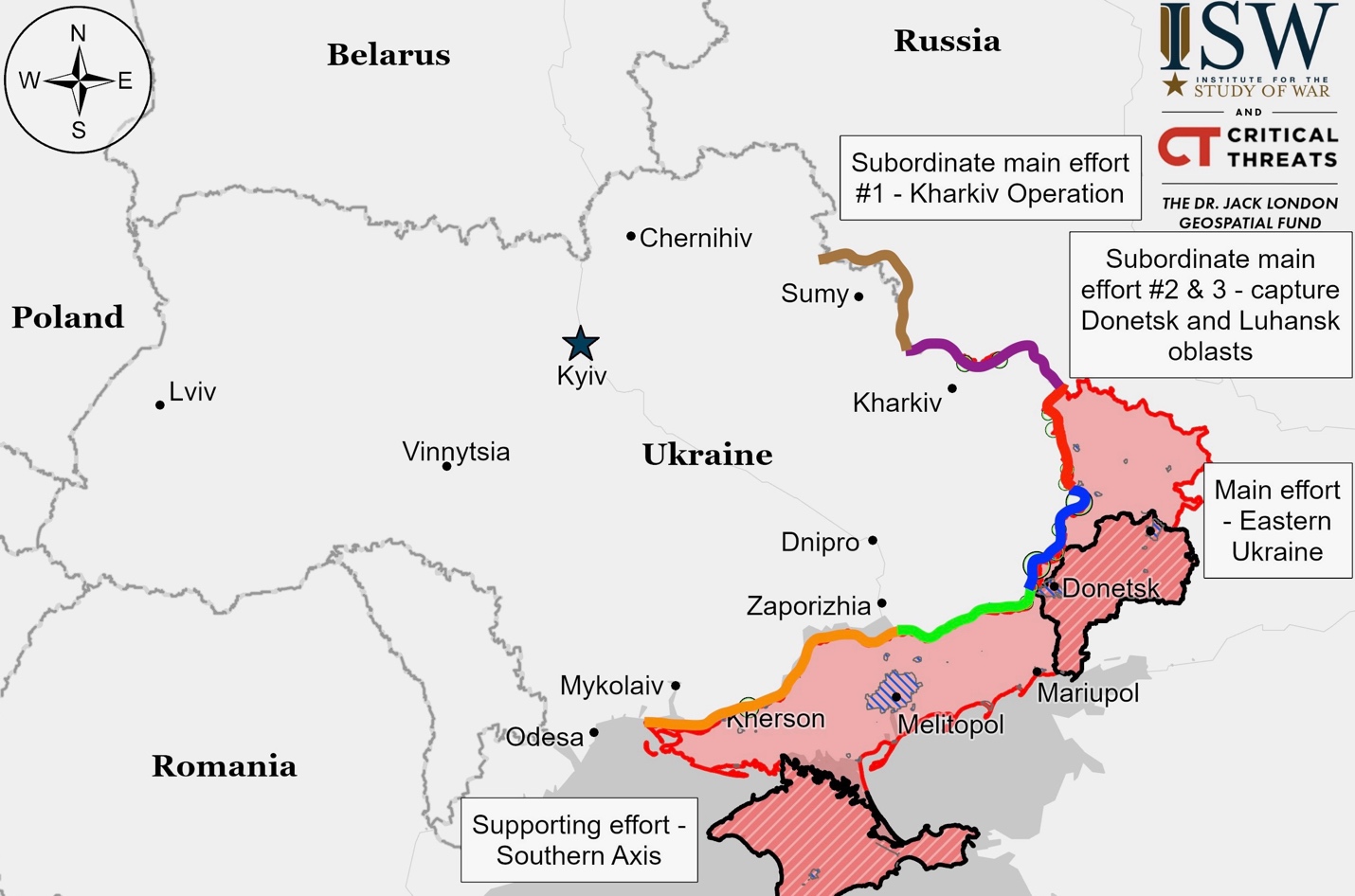
Ukrainian Operations in the Russian Federation – Initiative None
Russian forces have begun a counteroffensive in the Kursk Oblast, responding to a recent Ukrainian incursion into the region. Both Ukrainian President Volodymyr Zelensky and Pentagon spokesperson Major General Patrick Ryder have confirmed the ongoing Russian operations, though their scale and success remain disputed.
The Russian Defense Ministry claims to have regained control of 10 settlements in Kursk Oblast, where Ukrainian forces have held territory since August 6. However, these claims remain unverified. Major General Ryder described the Russian effort as “marginal” at this stage, suggesting limited progress.
President Zelensky provided a different perspective, stating that Ukraine still controls over 1,300 square kilometers and about 100 settlements in the region. He added that the initial Ukrainian incursion was aimed at diverting Russian forces from the Donbas region. According to Zelensky, Ukrainian forces have taken 600 Russian captives and inflicted 6,000 casualties during their operation.
The scale of the Russian counteroffensive remains unclear. Zelensky reported that Russia has deployed about 40,000 personnel to Kursk Oblast in response to the Ukrainian incursion, with aims to increase this number to 60,000-70,000. A Ukrainian military observer estimates the current Russian force at 33,000-35,000. U.S. officials previously suggested Russia would need 50,000 troops to expel Ukrainian forces from the area.
The composition of the Russian force in Kursk Oblast is reportedly mixed. It currently consists largely of poorly-trained conscripts and small units of regular and irregular forces, rather than experienced combat units. Russian Airborne (VDV) forces, considered more elite, are reportedly leading the counterattacks.
Recent fighting has seen both sides making limited advances. On September 12, Ukrainian forces advanced near Cherkasskoye Porechnoye, while Russian forces captured Snagost on September 13. Clashes have been reported around several settlements including Russkaya Konopelka, Lyubimovka, Pogrebki, Obukhovka, Olgovka, Kamyshevka, Borki, and Fanaseyevka.
Ukrainian sources claim that Russian reinforcements from Africa have arrived, possibly including Wagner Group or Africa Corps personnel. Various Russian units are reportedly involved in the fighting, including elements of naval infantry, airborne, and Chechen forces.
In a related development, Ukrainian official Andriy Demchenko reported on September 13 that Russian sabotage and reconnaissance activities along the Sumy Oblast border have significantly decreased since Ukraine began operations in Russia’s Kursk Oblast. This suggests a shift in Russian border tactics in response to Ukrainian cross-border actions.
As the situation continues to evolve, military analysts suggest that Russia may need to redeploy additional troops from other areas to mount a sustained counteroffensive in Kursk Oblast. Such a move could potentially impact ongoing Russian operations elsewhere in Ukraine.
Kharkiv Front – Initiative Russia
Russian military forces conducted attacks near several settlements north and northeast of Kharkiv City on September 12-13, according to recent reports. The operations targeted areas near Hlyboke, Hatyshche, and Vovchansk, but no confirmed territorial gains have been reported.
A Ukrainian military spokesperson provided details on the recent Russian activities in the region. The official noted an increase in the use of light armored vehicles by Russian forces in the area. However, despite this change in tactics, there has been no significant buildup of Russian forces near border settlements.
The spokesperson also addressed concerns about potential large-scale Russian reinforcements in Kharkiv Oblast. According to the official, Russia is not planning major troop increases in the region. Instead, the Russian military is conducting regular rotations of its forces.
Luhansk Front – Initiative Russia
Russian military forces have made notable advances near Kupyansk, successfully capturing the northern part of Petropavlivka, according to recent reports.
The Russian military has maintained its offensive operations along the Kupyansk-Svatove-Kreminna line, engaging in attacks across multiple locations. Areas of reported Russian military activity include Synkivka, Hlushkivka, Kolisnykivka, Stelmakhivka, Kopanky, Druzhelyubivka, Hrekivka, Makiivka, Nevske, Yampolivka, Torske, and Serebryanka.
A Russian source has claimed additional advances near Pishchane and Makiivka, though these reports remain unconfirmed by independent sources.
Ukrainian forces have reported an increase in Russian use of thermobaric artillery in the Lyman area. Thermobaric weapons, also known as vacuum bombs, are known for their powerful explosive effects.
Donetsk Front – Initiative Russia
Siversk
Russian forces have initiated a series of attacks in the vicinity of Siversk, targeting multiple areas around the city. The assaults were directed at Bilohorivka to the northeast, Verkhnokamyanske to the east, and Spirne and Vyimka to the southeast. Despite the multiple attacks in these areas, there have been no confirmed changes to the frontline as of the latest reports.
Chasiv Yar
Russian forces made advances west of Klishchiivka, a town southeast of Chasiv Yar, on September 13. This movement indicates a possible consolidation of Russian control over Klishchiivka, which could serve as a launching point for future military operations in the area. Ongoing combat was reported near the settlements of Chasiv Yar, Andriivka, and Stupochky. Additionally, there were unverified reports of Russian advances in the vicinity of Ivanivske.
Toretsk
Russian forces achieved a minor advance in the eastern part of Toretsk on September 12. Over the course of September 12 and 13, they maintained offensive operations in and around Toretsk. The attacks extended to nearby areas, including Dachne to the northeast, as well as Nelipivka and Niu York to the south.
Pokrovsk
Russian forces made a small advance northwest of Mykhailivka, southeast of Pokrovsk, on September 13. Unconfirmed reports indicate Russian advances in Hrodivka and near Ukrainsk. Fighting persisted in multiple areas surrounding Pokrovsk, including Zelene Pole, Vozdvyzhenka, Novooleksandrivka, Myrolyubivka, Novotroitske, Novohrodivka, Selydove, and Zhelanne Pershe on September 12 and 13. Russian forces recently destroyed several bridges near Pokrovsk, including one on the Bakhmut-Pokrovsk highway between Myrnohrad and Pokrovsk, and another near Selydove. These bridge destructions are believed to be aimed at disrupting Ukrainian supply lines and preparing for potential attacks on Pokrovsk and nearby areas.
West of Donetsk City
Russian forces continued their offensive operations near Donetsk City, with attacks focused around Heorhiivka on September 12 and 13. While a Russian source claimed advances north of Krasnohorivka and Hostre, no confirmed changes to the frontline in this area were reported.
On September 12, Russian forces conducted a large-scale mechanized assault near Donetsk City, advancing into eastern Hostre. The operation involved multiple waves over six hours, utilizing 46 pieces of equipment. Ukrainian forces reported destroying or damaging more than half of the Russian vehicles. Despite these losses, Russian forces managed to advance 6-8 km southwest of Krasnohorivka.
A Ukrainian brigade commander reported on September 13 that Russian forces in the Donetsk direction are employing a new mechanized assault tactic. This approach involves a heavily armored “turtle” tank with mine-clearing equipment leading a small unit of armored personnel carriers. These carriers transport infantry close to Ukrainian positions before withdrawing. Despite this new strategy, Russian forces continue to suffer significant vehicle losses, with reports suggesting up to 90 percent of vehicles in these assaults are destroyed.
Southwest of Donetsk City
Russian forces launched attacks on multiple locations west of Donetsk City on September 12 and 13. The targeted areas included Kostyantynivka, Vodyane, Vuhledar, Prechystivka, and Zolota Nyva. Russian sources reported advances near Vodyane and to the west of Prechystivka. However, these claims remain unverified, as there were no confirmed changes to the frontline in these areas.
Zaporizhia Front – Initiative None
Zaporizhia-Donetsk Border Area
Russian forces continued their attacks near Donetsk City on September 12 and 13, concentrating on areas around Vuhledar, including Kostyantynivka, Vodyane, Prechystivka, and Zolota Nyva. Russian sources claimed advances near Vodyane and west of Prechystivka; however, there is no confirmed change to the frontline.
Zaporizhia Line
Ukrainian and Russian forces are engaged in ongoing positional fighting near Robotyne in western Zaporizhia. Ukrainian spokesperson Captain Dmytro Lykhovyi reported intense Russian shelling of Ukrainian positions, particularly in contested areas. Ukrainian forces are establishing new positions in response, especially near Orikhiv. A Russian source claimed to show drone strikes on a Ukrainian position near Kamyanske.
Kherson (Dnipro River) Front – Initiative None
Fighting persists in the eastern part of Kherson Oblast along the left bank of the Dnipro River. However, there have been no confirmed changes to the front line in this area.
Ukraine News
Russia launched 26 Shahed drones against Ukraine overnight on September 12-13, with Ukrainian forces downing 24 over several oblasts. A strike in Ivano-Frankivsk Oblast damaged industrial infrastructure, while falling debris caused damage in Odesa City and Odesa Oblast. A Russian source claimed strikes on Ukrainian equipment near Odesa’s Hydroport Airport.
Ukraine accused Russia of using strategic bombers to strike a civilian grain vessel in the Black Sea near Romania. The attack on September 11 targeted the Turkish-operated bulk carrier Aya, which was carrying Ukrainian grain to Egypt after departing from the port of Chornomorsk. The vessel was damaged but reported no casualties among the crew. This incident marks the first deliberate missile strike on a civilian grain transport ship in the Black Sea since the full-scale invasion began.
President Volodymyr Zelensky and the U.S. Ambassador to Ukraine condemned the attack as a violation of international law and a threat to global food security. Romania’s Foreign Ministry labeled the incident an “unprecedented escalation” of Russia’s war and a breach of international maritime law. The attack has raised concerns about the safety of Black Sea shipping routes and could potentially impact global wheat prices. Ukraine has been working to maintain its grain exports through a shipping corridor established in August 2023, despite ongoing tensions with Russia in the region.
On September 13, Ukraine and Russia conducted their second prisoner of war exchange since the Ukrainian incursion into Kursk Oblast. Each side returned 49 prisoners, with the United Arab Emirates mediating the swap. Ukraine received servicemembers who defended the Azovstal Steel Plant in Mariupol, along with police, border guards, and civilians. Among those freed were 23 women, Crimean Tatar Leniye Umerova, and Hero of Ukraine Viktor Ivchuk. This exchange marks the 56th prisoner exchange since the full-scale war began, with a total of 3,569 Ukrainians returned from Russian captivity. President Zelensky emphasized the need to bring home all Ukrainian soldiers and civilians.
A memorial service was held in Kyiv on September 12 for Anton Samborskyi, the 32-year-old adopted son of Ukraine’s Chief Rabbi Moshe Azman. Samborskyi, who was recently drafted into the army and had become a father, was killed in combat. He was buried in Kyiv’s Jewish cemetery. Rabbi Azman expressed gratitude for the support he received and announced a fundraising campaign in his son’s memory to aid those affected by the war.
A CIA report reveals Ukraine has the world’s highest death rate at 18.6 per thousand people and the lowest birth rate at 6 births per thousand. The country’s birth rate has declined significantly during the ongoing war, with 87,655 children born in the first half of 2024, a 9% decrease from the previous year. Frontline regions like Kherson and Donetsk have especially low birth rates, while no babies were registered in Luhansk. Currently, there are three deaths for every newborn in Ukraine, highlighting a severe demographic crisis exacerbated by the Russian invasion. The Ministry of Health reports that Ukraine’s birth rate has been declining by about 7% annually since 2013.
Innocent Victims Of War
The casualty count of civilians in the past 24 hours: (Russian War Crimes)
DEATHS: 9 INJURIES: 45
Russian forces conducted multiple attacks across Ukraine on September 12 and 13, resulting in civilian deaths, injuries, and significant damage to infrastructure in several regions.
In Sumy Oblast, a Russian airstrike on the village of Yampil on September 13 killed two civilians and injured six others, including a 4-year-old child. The attack involved KAB bombs dropped on civilian infrastructure, damaging multi-story buildings, a hospital, and disrupting the energy supply. A day earlier, on September 12, a Russian airstrike on the Yampil community resulted in the death of one woman.
In Dnipropetrovsk Oblast, Russian forces attacked the Nikopol district on September 12. A 73-year-old resident of Nikopol was hospitalized with shrapnel wounds. The attacks damaged a church, a fire truck, houses, and other buildings in the area. In Krasnoiarske, a house was hit, killing one person and injuring four others. Additional injuries were reported in Kostiantynivka, Kurakhove, and Sukha Balka, where two people were injured in each location.
Kharkiv Oblast experienced heavy attacks over the past day, resulting in four deaths and 18 injuries. The village of Borova near Izium was struck, killing four people and injuring ten others, including three first responders. In Kharkiv city, an airstrike injured four adults and left a 10-year-old girl in shock. Further injuries were reported in Derhachi and Morozova.
In Kherson Oblast, Russian attacks over the past day killed one person and injured ten others. The assaults also damaged an agricultural enterprise, 16 houses, an outbuilding, and several cars.
A Russian drone attack on the town of Ochakiv in Mykolaiv Oblast on September 12 injured a 16-year-old girl.
In Odesa Oblast, Russia launched a drone attack that injured a 74-year-old man. The attack damaged 20 houses, four garages, four cars, and other property.
A drone attack on western Ivano-Frankivsk Oblast damaged an industrial facility, according to the Energy Ministry. No casualties were reported in this incident.
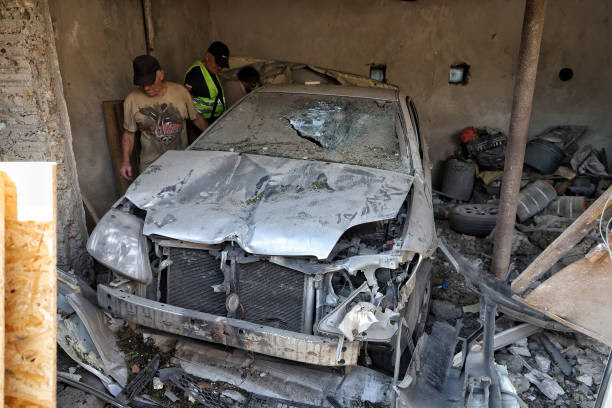 The aftermath of the Russian drone attack in Odesa. (Ukrinform/NurPhoto via Getty Images)
The aftermath of the Russian drone attack in Odesa. (Ukrinform/NurPhoto via Getty Images)
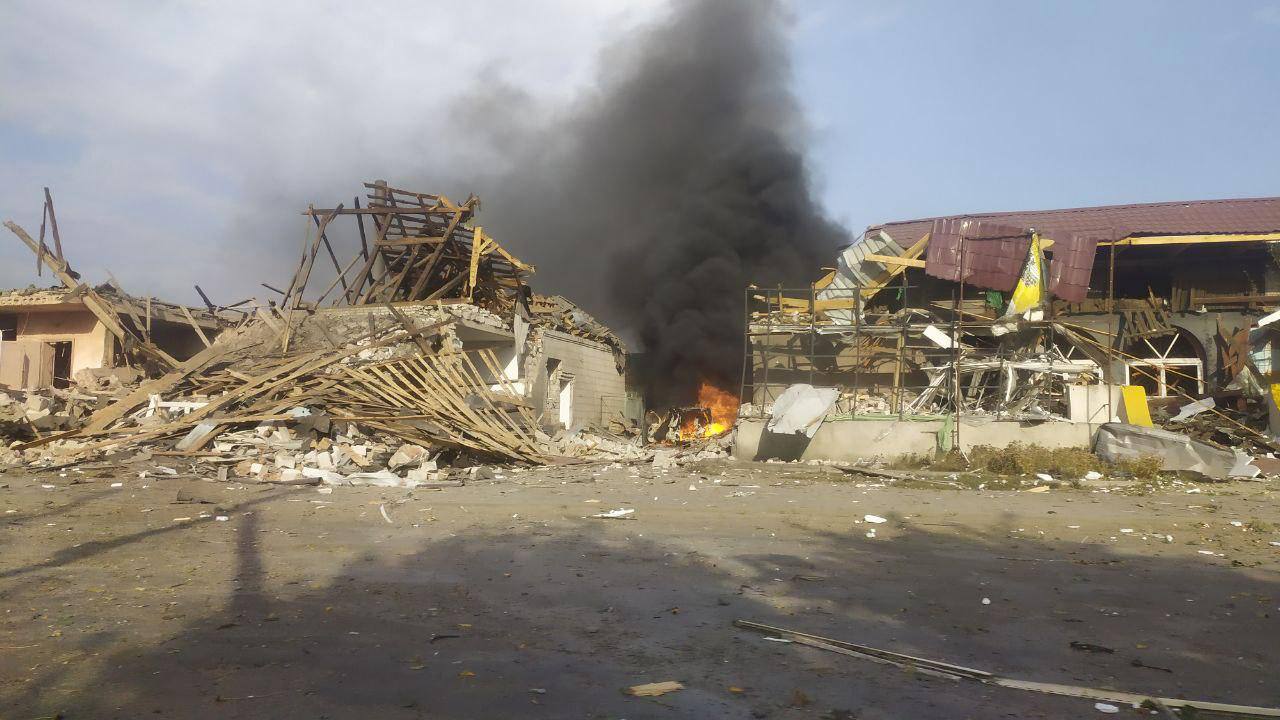 The aftermath of a Russian airstrike against Yampil, Sumy Oblast, Ukraine. (Sumy Oblast Military Administration/Telegram)
The aftermath of a Russian airstrike against Yampil, Sumy Oblast, Ukraine. (Sumy Oblast Military Administration/Telegram)
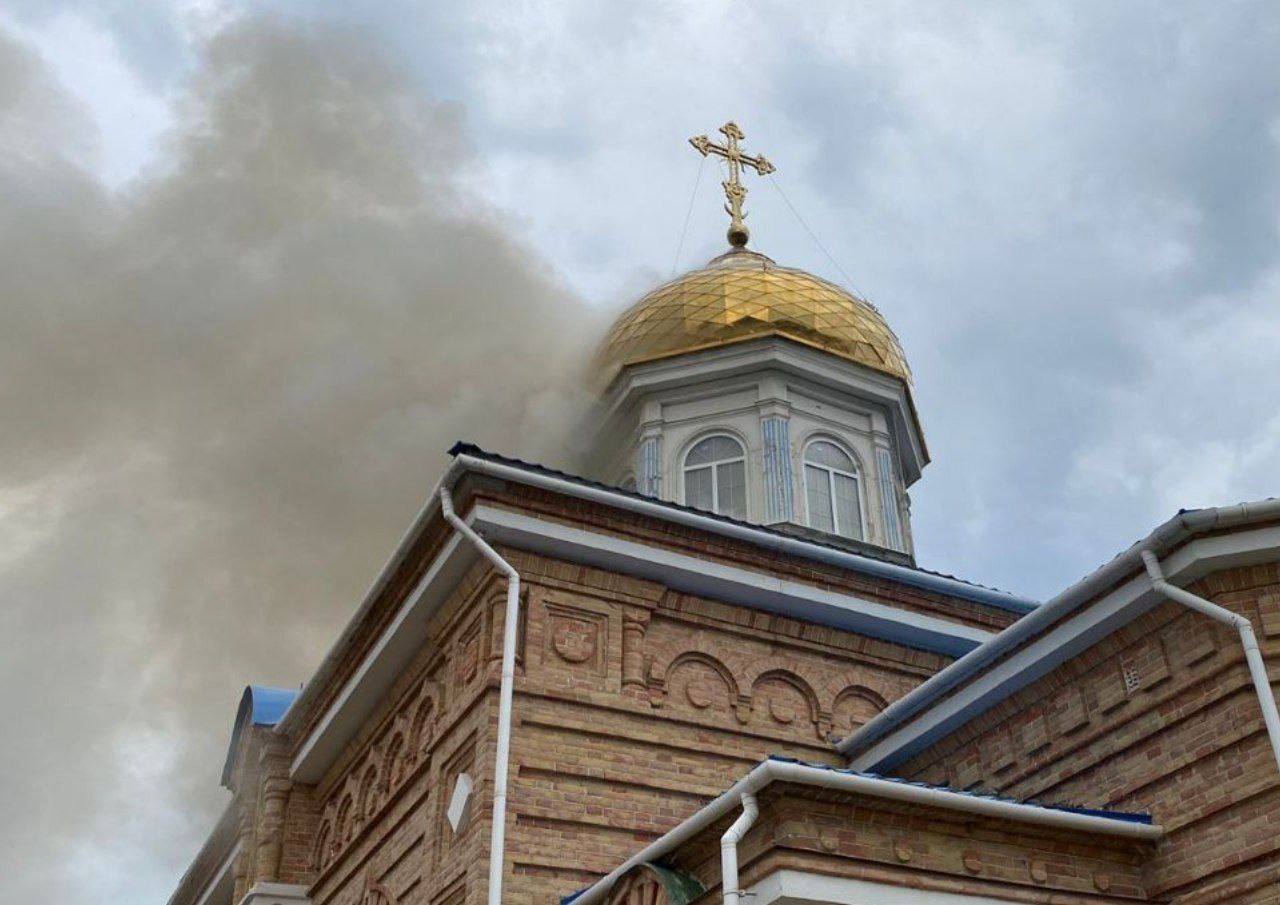 A church damaged in the Nikopol district in Dnipropetrovsk Oblast, Ukraine. (Governor Serhii Lysak/Telegram)
A church damaged in the Nikopol district in Dnipropetrovsk Oblast, Ukraine. (Governor Serhii Lysak/Telegram)
Ukraine’s Allies
Italy’s Foreign Minister summoned Russia’s ambassador after an Italian journalist was placed on Russia’s wanted list for reporting from Kursk.
Ukraine’s Foreign Ministry reported that U.S. sanctions are impacting Russia’s technology sector, with major companies like Google, Microsoft, and Oracle withdrawing services or imposing new restrictions on Russian users.
Ukrainian pilots have begun training on F-16 fighter jets in Romania, as announced by Defense Minister Rustem Umerov. This is part of a larger effort by Ukraine’s allies to support Kyiv with fighter jets. The Netherlands has promised 24 F-16s to Ukraine, with Denmark, Norway, and Belgium also pledging aircraft. While training is progressing, concerns have been raised about the pace following an F-16 crash in Ukraine in August. The program continues as Ukraine seeks to strengthen its Air Force capabilities.
Finland is sending its 25th military aid package to Ukraine, worth about 118 million euros ($130 million). This brings Finland’s total military support to Ukraine to 2.3 billion euros ($2.5 billion). Defense Minister Antti Hakkanen emphasized Finland’s continued commitment to helping Ukraine. While specific contents were not disclosed, the package is part of a 10-year security agreement between Finland and Ukraine signed in April.
The Toronto International Film Festival (TIFF) has canceled further screenings of “Russians at War,” a documentary by Anastasia Trofimova, citing safety concerns. The film, which follows a Russian battalion in Ukraine, has been criticized as Russian propaganda. Ukraine’s Consul General in Toronto welcomed the decision, while Canada’s Deputy Prime Minister Chrystia Freeland had earlier expressed concerns about the film and its funding with Canadian public money. The controversy led to protests by activists and criticism from the Ukrainian community. TIFF stated that while they stand by their initial decision to include the film, they prioritize the safety of festival attendees. The Canadian agency TVO, which initially financed the film, has withdrawn its support.
Polish Foreign Minister Radoslaw Sikorski urged Ukraine to address the Volyn tragedy, a 1943 massacre of Poles by Ukrainian insurgents in Nazi-occupied Volyn. Sikorski emphasized the need for victims to receive proper burials and for both countries to choose a “common and secure future.” Ukrainian counterpart Andrii Sybiha agreed on the importance of depoliticizing historical issues. The matter remains unresolved, with Poland seeking permission for exhumations of victims. A recent memorial in Poland sparked controversy due to its depiction. Estimates suggest 60,000 to 90,000 Polish victims and 10,000 to 20,000 Ukrainian casualties during the 1940s conflicts in the region.
Russia News
Russia has expelled six British Embassy staff from Moscow, accusing them of espionage and subversive activities. This move follows UK Foreign Secretary David Lammy’s visit to Kyiv and rumors about potential British long-range missile strikes on Russian soil.
Russia’s Federal Security Service (FSB) claims to have evidence of the diplomats’ alleged intelligence activities. The UK has not yet responded to these accusations. Russia views this action as a response to “unfriendly steps” by London and claims the diplomats’ activities threatened its security. The FSB also threatened further expulsions if more evidence is found.
Russian Mobilization and Defense Industrial Base
Russian authorities are pressuring minorities and Ukrainian youth in occupied Ukraine to join the Russian military. In Starobilsk, Luhansk Oblast, officials have encouraged high school students to sign military contracts.
Separately, India reports that 45 of its citizens who were tricked into joining the Russian military in Ukraine have been released, with 50 more still awaiting discharge. This follows an agreement between Indian Prime Minister Narendra Modi and Russian President Vladimir Putin in July. At least four Indians have died fighting for Russia. Prime Minister Modi has urged Russia to discharge Indian nationals who were misled into fighting in Ukraine.
India maintains a neutral stance in the Russia-Ukraine conflict, continuing to purchase Russian oil while calling for a peaceful resolution. Prime Minister Modi has recently visited both Moscow and Kyiv, demonstrating India’s balanced approach to the situation.
Despite international sanctions, Russia imported $30 million worth of aircraft tires from Western manufacturers in 2023, according to a Ukrainian report. Companies such as Goodyear, Dunlop, Bridgestone, and Michelin were involved, with Michelin accounting for 70% of the imports. Russia reportedly used third-country intermediaries—mainly in China, Turkey, the United Arab Emirates, Saudi Arabia, and Central Asia—to bypass sanctions.
Additionally, an investigation by InformNapalm revealed that Russia maintains its Su-30SM fighter aircraft using French equipment, facilitated by a Kazakh company. These reports highlight Russia’s ongoing efforts to circumvent Western sanctions on military-use materials and components, demonstrating the challenges in enforcing such restrictions.
Meanwhile, Russian-appointed Donetsk leader Denis Pushilin claims that Russian forces have developed a new portable electronic warfare system that can be attached to soldiers’ helmets. The 114th Motorized Rifle Brigade is reportedly already using this device, which is intended to counter drones. There are plans to provide each soldier with their own device in the future.
Russia’s Allies
Russian Deputy Defense Minister Alexander Fomin visited Beijing on September 13 for the Xiangshan Forum, highlighting the growing military partnership between Russia and China. During the visit, Fomin announced plans for over 100 joint military events in 2024 and criticized the United States and NATO for escalating the conflict in Ukraine. This visit underscores Russia’s efforts to strengthen alliances as it continues its military operations in Ukraine.
Simultaneously, Russia is enhancing its ties with North Korea and Iran to support its war efforts. Russian Security Council head Sergei Shoigu visited North Korea on September 13, meeting with President Kim Jong Un. This meeting follows Russian President Vladimir Putin’s visit in June 2024, during which he signed a strategic partnership agreement and secured ongoing shipments of North Korean artillery shells and missiles. The collaboration with North Korea signals a significant shift in regional alliances.
The visit to North Korea also comes after Iran’s recent delivery of over 200 short-range ballistic missiles to Russia and Putin’s meeting with Iranian security officials on September 12. These developments indicate Russia’s intent to build a coalition of friendly states to bolster its defense industry and secure economic cooperation amid international sanctions and isolation.
In addition to diplomatic efforts, Russia has been advancing its military capabilities. Reuters reported on September 13 that Russia has been producing and using a long-range attack drone called “Garpiya-A1” since 2023. The drone, which has a range of 1,500 kilometers, utilizes Chinese engines and other dual-use parts. Russian forces have reportedly employed these drones to strike both military and civilian targets in Ukraine. According to the report, Russian manufacturer IEMZ Kupol produced over 2,500 of these drones between July 2023 and July 2024, highlighting a significant increase in Russia’s unmanned aerial capabilities.
These actions reflect Russia’s broader strategy to reinforce its military strength through international partnerships. By deepening ties with China, North Korea, and Iran, Russia aims to enhance its defense resources and sustain its operations in Ukraine despite ongoing tensions with Western nations.
Controlling the Narrative and Russian Propaganda
Russian media outlet Readovka has launched a Spanish-language project in Venezuela called “Readovka en Venezuela.” This new venture will cover the Ukraine war, Venezuelan news, and international relations. The expansion aligns with growing ties between Russia and Venezuela, including a recent agreement to jointly combat “unilateral coercive measures” through information channels and diplomacy.
Russian authorities are attempting to discredit the Ukrainian incursion into Kursk Oblast and discourage Western aid to Ukraine. They have charged Ukrainian Major General Dmytro Krasilnikov with various crimes and claim that Ukrainian forces plan to attack the Kursk Nuclear Power Plant (KNPP). However, evidence suggests that Ukrainian forces have deliberately avoided striking the KNPP despite having the capability to do so.
Source Material
Institute for the Study of War – understandingwar.org
The Kyiv Independent – kyivindependent.com
Kyiv Post – kyivpost.com
